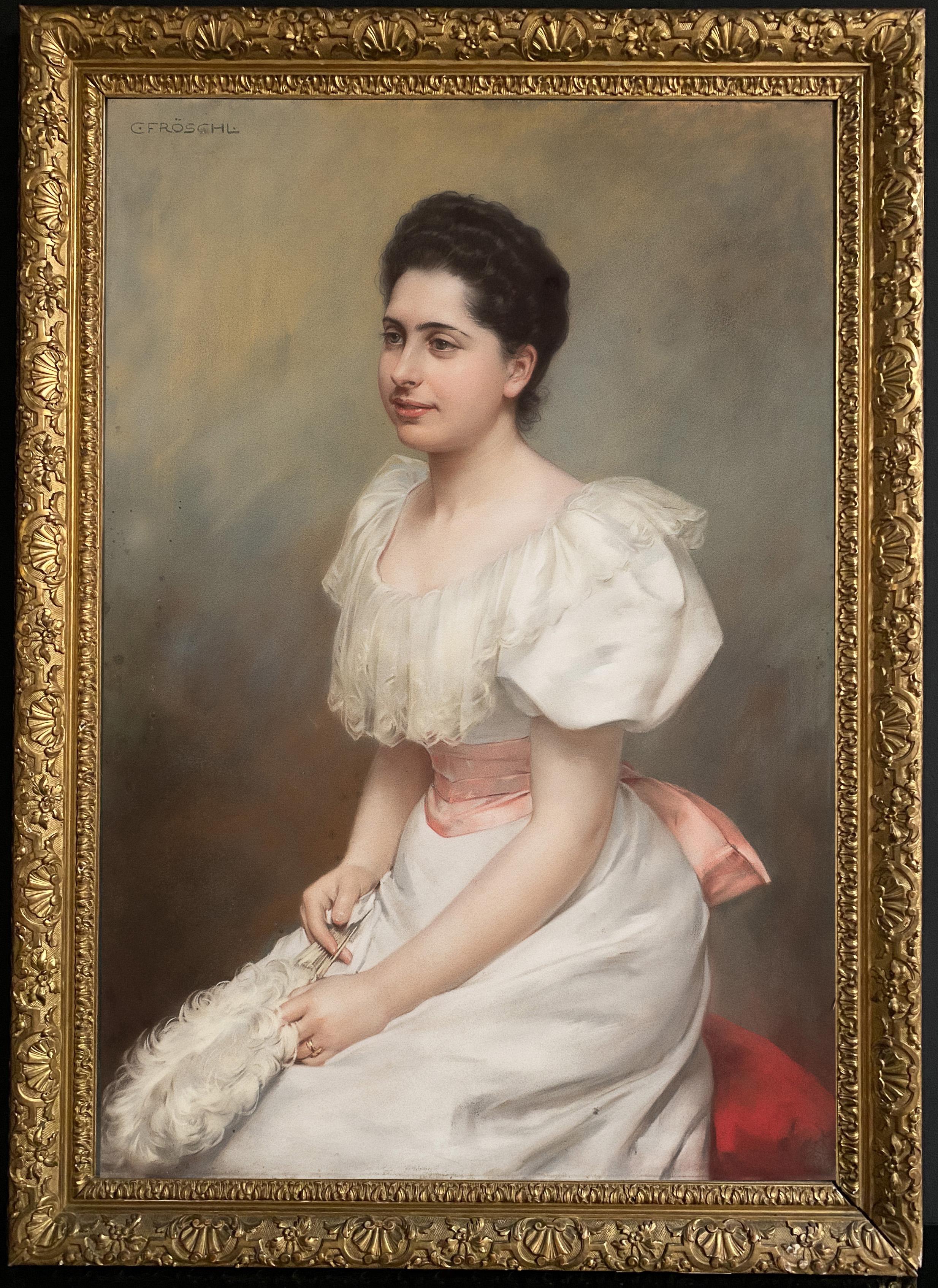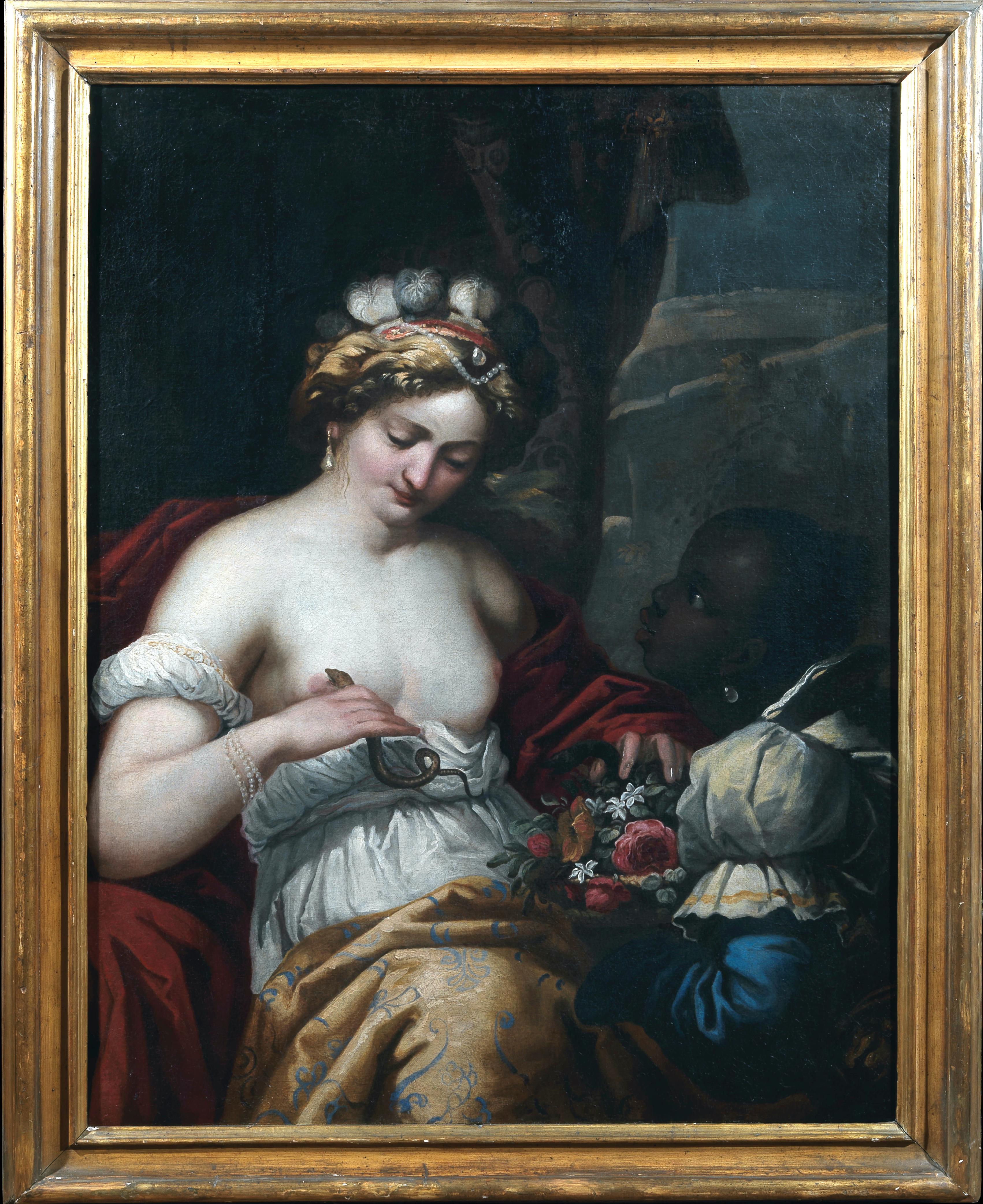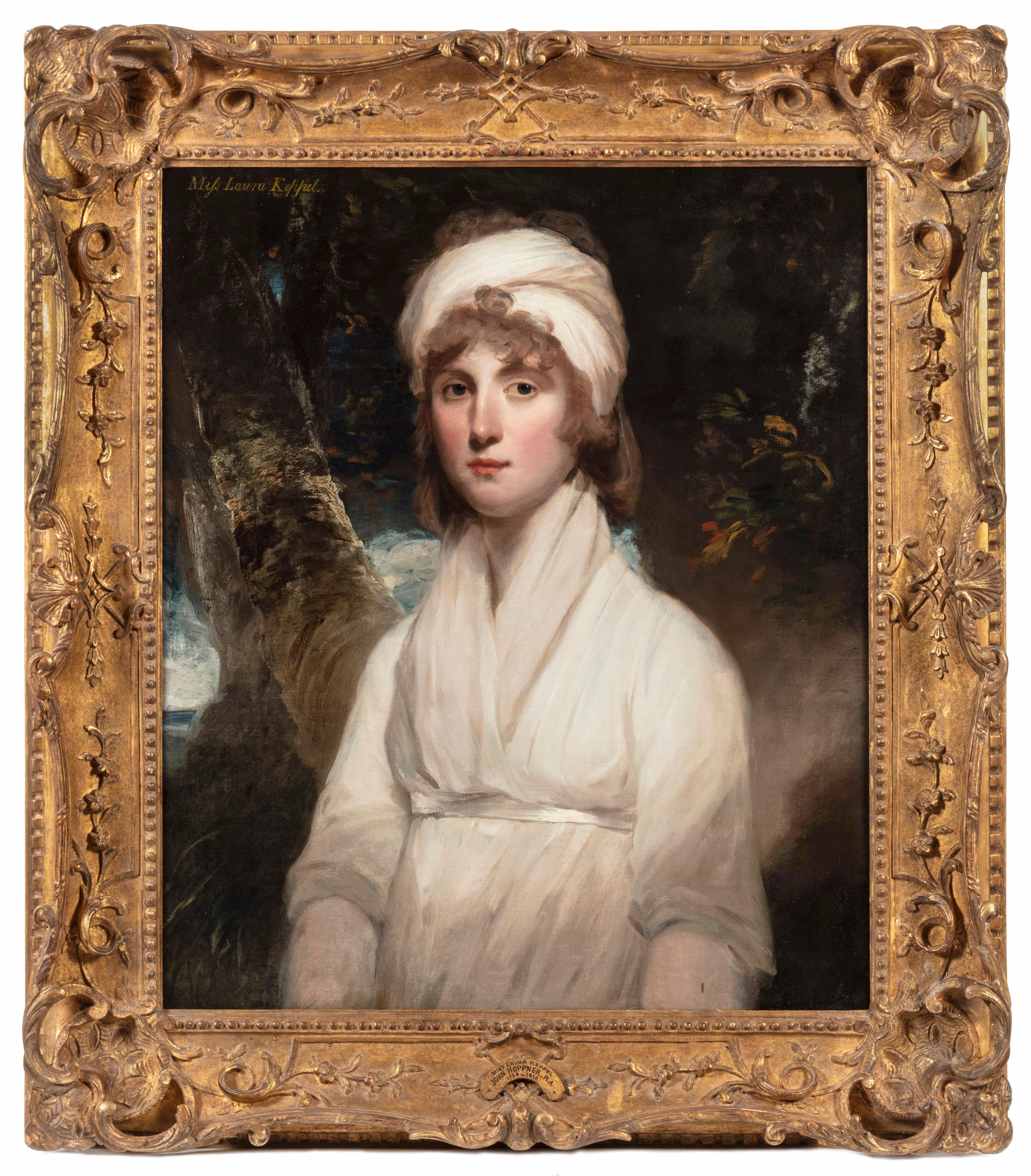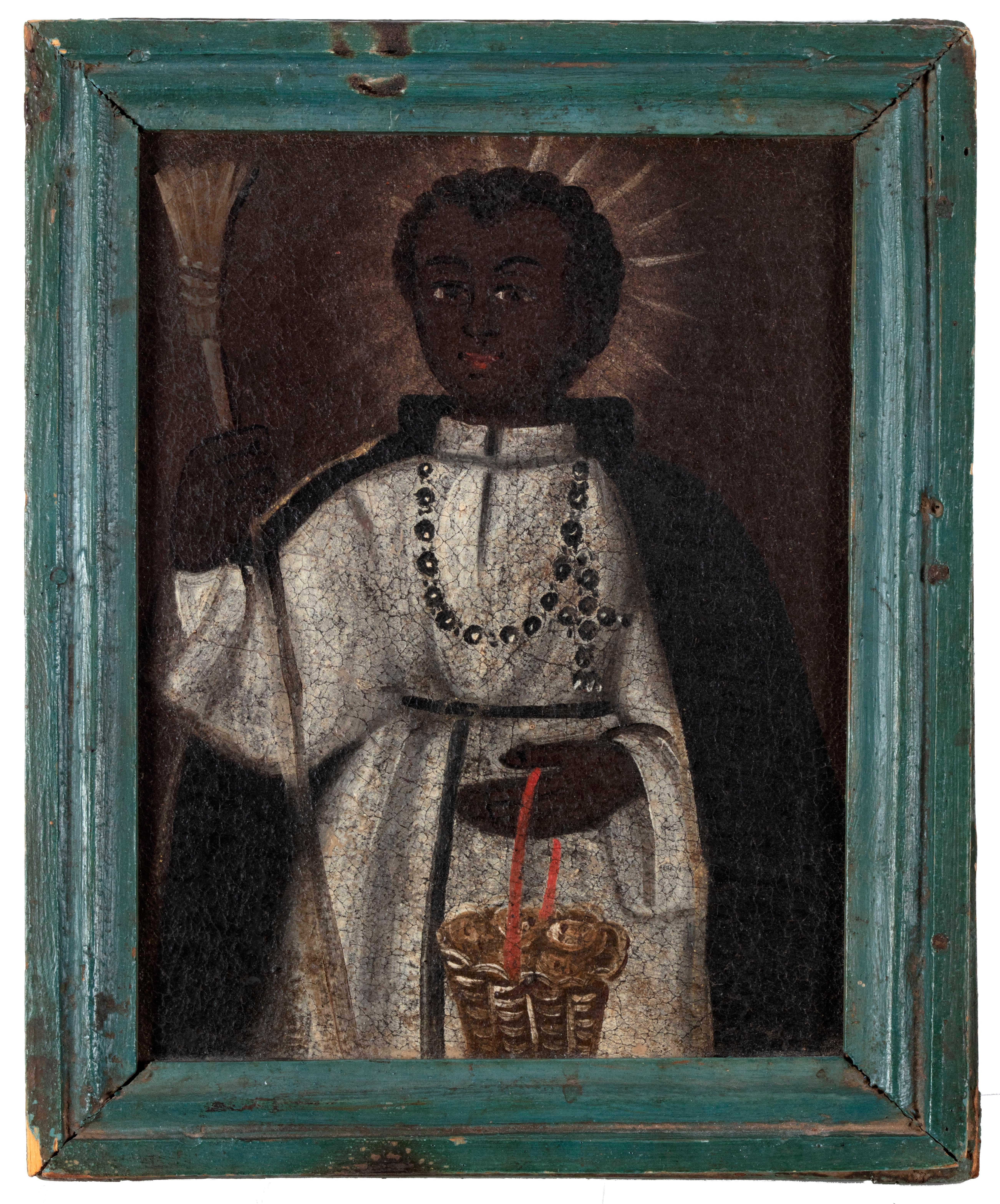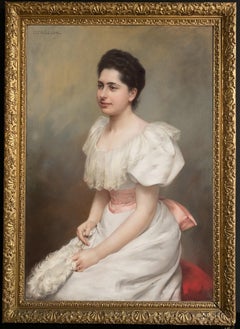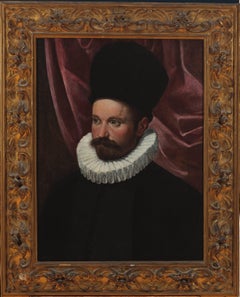Oil on Board 'Irish Eyes' by Ken Hamilton
View Similar Items
1 of 3
Ken HamiltonOil on Board 'Irish Eyes' by Ken Hamilton
About the Item
- Creator:Ken Hamilton
- Period:
- Condition:
- Gallery Location:Belfast, GB
- Reference Number:Seller: R10101stDibs: LU96013111203
You May Also Like
- Venice Landscape Italian Oil on Canvas Painting in Gilt Wood Frame, Belle EpoqueLocated in Firenze, ITThis delightful turn of the century (early 20th century) oil on canvas painting represents an Italian landscape with one of the most famous squares in the world: Piazza San Marco in ...Category
Early 20th Century Impressionist Landscape Paintings
MaterialsCanvas, Oil
- Graceful Portrait of the Countess Carrobio Pastel on Canvas 1910 circaBy Carl FroschlLocated in Rome, ITGraceful Portrait of the Countess Carrobio with elegant white dress. Pastel on Canvas with finely carved gilt wood frame. Signed CFroschl . Carl Forsche 1848- 1934 . Austrian Painte...Category
Early 20th Century Art Nouveau Figurative Paintings
MaterialsPastel
- Portrait of a GentlemanBy Ippolito Scarsella (Scarsellino)Located in New York, NYProvenance: Suida-Manning Collection, New York Private Collection Exhibited: Venetian Paintings of the Sixteenth Century, Finch College Museum of Art, New York, October 30-December 15, 1963, no. 31. Veronese & His Studio in North American Collections, Birmingham Museum of Art, Oct. 1-Nov. 15, 1972, and Montgomery Museum of Fine Arts, Dec. 5-Dec. 31, 1972 Literature: Robert L. Manning, A Loan Exhibition of Venetian Paintings of the Sixteenth Century, exh. cat. New York 1963, cat. no. 31ill., as by Veronese Stephen Clayton and Edward Weeks, eds., introduction by David Rosand, Veronese & His Studio in North American Collections, Birmingham 1972, as by Veronese, p. 38 ill. Terisio Pignatti, Veronese, Venice 1976, I, p. 199, cat. no. A225, II, fig. 908, as attributed to Veronese Terisio Pignatti and Filippo Pedrocco, Veronese; catalogo completo dei dipinti, Florence 1991, no. 54°, as attributed to Veronese. Terisio Pignatti and Filippo Pedrocco, Veronese, Milan 1995, II, pp. 517-518ill., cat. no. A 56, under attributed paintings, by Veronese and workshop) John Garton, Grace and Grandeur; The Portraiture of Paolo Veronese, London-Turnhout 2008, p. 237, fig. 77, cat. no. R16, as workshop of Veronese. Scarsellino’s art is widely regarded as critical link between the Renaissance and the Baroque styles in Emilian painting; not only was he an important transmitter of the heritage of the Renaissance, but he was also open to innovative ideas, and was one of the earliest to experiment with the trend to naturalism that would become fundamental to art of the new century. Born around 1550, he received his earliest training from his father Sigismondo, an architect and painter; it was probably while working at his father’s side as a youth that he acquired the nickname Scarsellino, or “little Scarsella”. After absorbing the principles of his art in Ferrara and Parma, he went to Venice in 1570, staying for four years and working in the shop of Veronese. In the following decade, his art —especially in terms of its piety and its development of landscape— demonstrates a strong sympathy with that of the Carracci, with whom he worked in 1592-1593 at the Palazzo dei Diamanti in Ferrara. Maria Angela Novelli and later Alessandra Frabetti both propose that Scarsellino traveled to Rome, although such a trip has not been documented; if he did travel to Rome, it probably would have occurred during the years that Scarsellino’s colleagues Agostino and Annibale Carracci were there, that is, beginning in 1595 and until 1609. The last decades of Scarsellino’s career again involve stylistic experimentation, this time in a manner that would bring his work very close to the progressive figurative naturalism of Carlo Bononi and prepare the way for Guercino. The present portrait of a distinguished gentleman had been long thought to be by Paolo Veronese and was in fact attributed to him by such distinguished connoisseurs as Adolfo Venturi and Wilhelm Suida. The portrait’s style is, however, distinct from Veronese’s, although clearly indebted to it, and the attribution to the young Scarsellino is wholly convincing. The painting would then date from the 1570s – a date confirmed by the costume the subject wears. The puffed hat that appears in the painting had a rather short-lived vogue in the early 1570s. One sees it in Giambattista Moroni’s Portrait of Count...Category
18th Century and Earlier Baroque Portrait Paintings
MaterialsCanvas, Oil
- Portrait of a ManLocated in New York, NYProvenance: with Leo Blumenreich and Julius Böhler, Munich, 1924 Dr. Frederic Goldstein Oppenheimer (1881-1963), San Antonio, Texas; by whom given to: Abraham M. Adler, New York, un...Category
16th Century Old Masters Portrait Paintings
MaterialsOil, Panel
$52,500 - Graceful Portrait of the Countess Carrobio Pastel on Canvas 1910 circaBy Carl FroschlLocated in Rome, ITGraceful Portrait of the Countess Carrobio with elegant white dress. Pastel on Canvas with finely carved gilt wood frame. Signed CFroschl . Carl Forsche 1848- 1934 . Austrian Painter...Category
Early 20th Century Art Nouveau Figurative Paintings
MaterialsPastel
- Portrait Painting Oil on Canvas by Joseph BadgerLocated in Rome, ITJoseph Badger (c. 1707–1765) was a portrait artist in Boston, Massachusetts, in the 18th century. This amazing painting depicting a young boy with a bird. oil on canvas cm 93 x73...Category
18th Century Academic Portrait Paintings
MaterialsOil
Recently Viewed
View AllMore Ways To Browse
Portrait Lady British
King Charles I
Queen Of England Portrait
Antique Head Portrait
Le Secret
Portrait Of Lady 18th
18th French Oil Portrait
18th Century Oil Painting Paris
Portrait Of A Royal Lady
The Titan
Our Lady Oil
Lady Dior France
18th Century Oil Portrait French
16th And 17th Paintings
Early 19th Century American Portrait Paintings
King George I
Painting Portrait Handsome
18th Century Portrait Of A Lady

